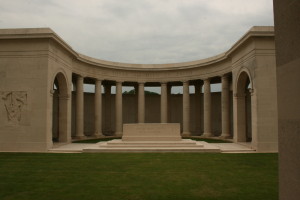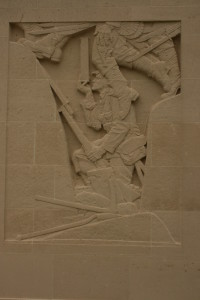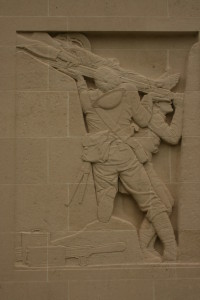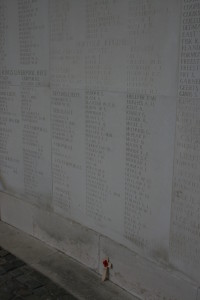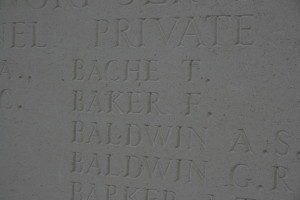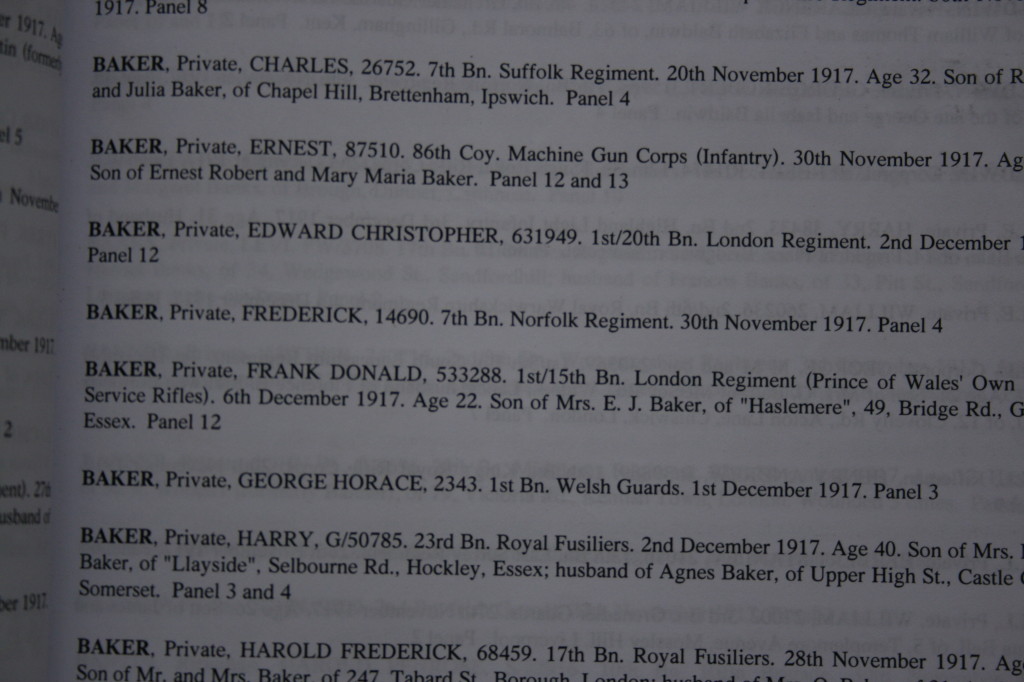Frederick Baker was born in Saxlingham in the autumn of 1895. He was the son of George Baker, a farm labourer from Hempnall and Anna Maria Baker (nee Youngman) from Saxlingham Nethergate. George and Anna Maria were married in Saxlingham Nethergate church in December 1884. Frederick was the sixth of their ten children. He had six brothers and three sisters; Maud, William, John, Charles, Sydney, James, May, Mabel and Albert.
In the early days of their marriage George and Anna lived in Shotesham but were living in Saxlingham by the time their fifth child, Sydney, was born in 1893. In 1901 according to the Census records the family was living in Brown’s Lane.
Frederick along with some of his siblings attended Saxlingham Nethergate Church School. There is a reference to his being there in 1903 and to his leaving in 1909. In 1911 he was working as a farm labourer like three of his older brothers, John, Charles and Sydney. William and Maud were no longer living at home, and the younger children were still at school.
Frederick became a private in 7th Battalion, Norfolk Regiment, having enlisted in Norwich. The 7th Battalion was part of Kitchener’s First New Army and after training the Battalion went to France in June 1915. It is not known when Frederick joined the Norfolk Regiment but the war medal records show that he arrived in France on 30 August 1915. However the Regiment records show that he was back in England and listed as being sick in Leicester on 9th November 1915. He was in France again by the end of May 1916 when he was again in hospital, this time at the 2nd General Hospital in Le Havre, when his condition was awaiting diagnosis. On 15 February 1917 he was admitted to the 2nd Australian General Hospital at Wimereux, Rouen with infected glands and on 3rd June 1917 he was ill in the General Hospital in Barnet.
The 7th Battalion, Norfolk Regiment was involved in the battle of Cambrai which occurred during November and December 1917. The aim of the battle was to take the area of Cambrai and to gain control of an important railway line. It was decided to use new tactics which involved taking the enemy by surprise. Previously areas about to be attacked were heavily bombarded. In this battle this did not occur but tanks were used in great numbers and soldiers followed in cover of smoke screens. The idea was that the soldiers would move behind the tanks like a worm and not in a line as in previous battles. The first attack happened on 20 November 1917 and was successful. It used artillery, tanks and aircraft. On 22 November the advance was stopped so that the troops could rest and reinforcements be mobilised. Unfortunately this also allowed the Germans to reinforce. The Germans mounted a counter attack on the morning of 30th November 1917 taking the British Forces by surprise and over the next few days quickly regained the ground that had previously been taken. The British Forces casualties were high and the Norfolk Division suffered heavy losses.
Frederick Baker was reported missing on 30th November 1917, and subsequently listed as having died on that date or later. His body was never found and he is remembered on The Cambrai Memorial at Louverval in northern France.
This memorial was designed by Harold Charlton Bradshaw and commemorates more than 7,000 men from Britain and South Africa who were killed in the Battle of Cambrai during November and December 1917 and who have no known grave.
Details from the memorial
Panel commemorating the men of the Norfolk Regiment
Frederick Baker
Entry in the Cambrai Memorial’s Book of Remembrance
Frederick’s brothers, Charles, James, Sydney and William also fought in the war and returned safely.
It is said in reports relating to the building of the village war memorial that one of the men that died had scratched his initials into one of the bricks that was subsequently used in building it. Although there is no longer any evidence of this, as the brick was removed in the renovation of the steps of the memorial in 1990’s, it is thought that they were Frederick Baker’s initials.
Acknowledgements
Norfolk Regiment Records, Regimental Museum, Castle Museum, Norwich, Norfolk
www.wartimememoriesproject.com/allied/norfolkregiment7-gw.php

